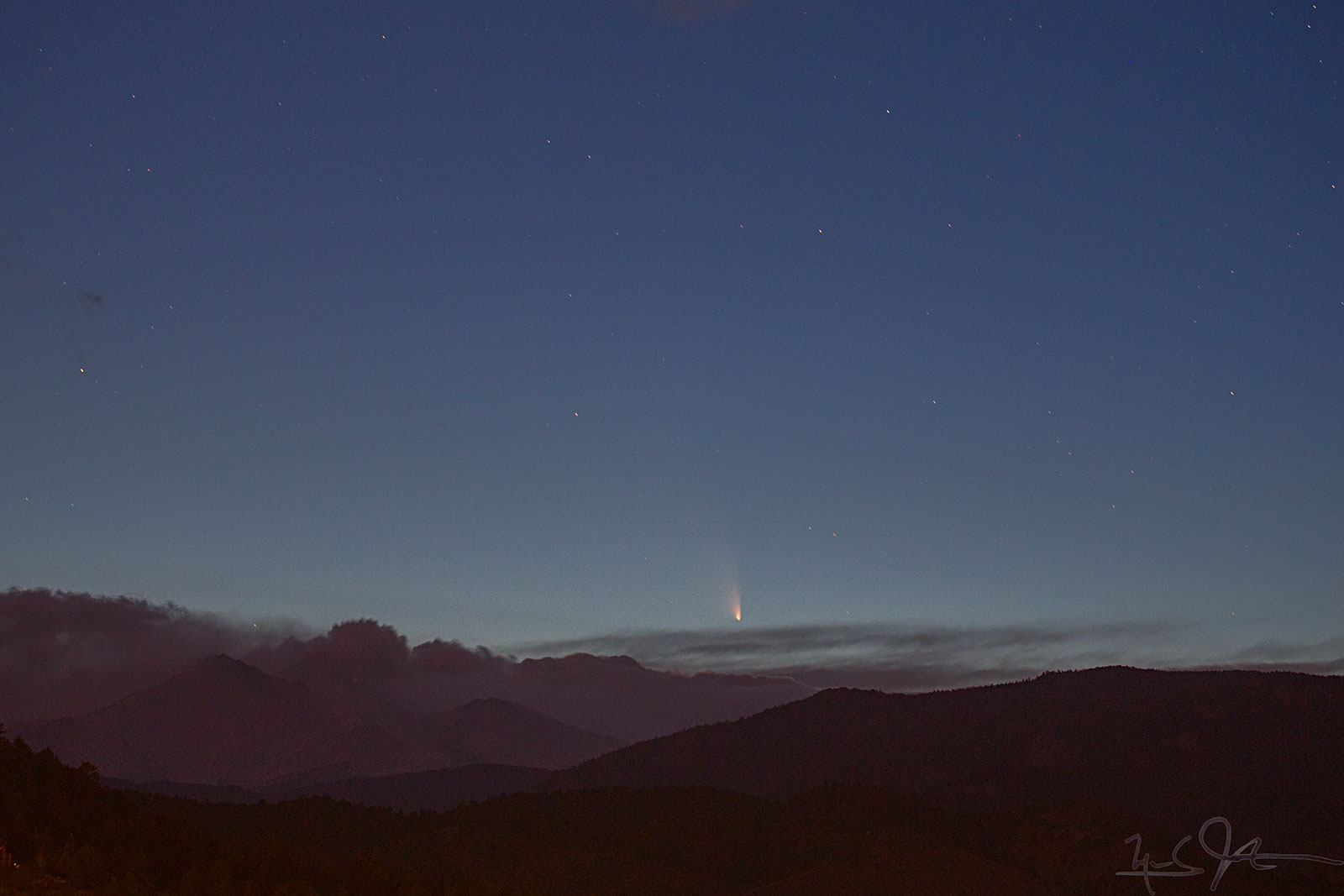Clouds cleared around sundown and allowed some nice views of the comet this evening.
Comet C/2011 L4 Pan-STARRS drops into the notch between Mt. Meeker and Long's Peak from a viewpoint in Lyons, Colorado.
Comet C/2011 L4 Pan-STARRS drops into the notch between Mt. Meeker and Long's Peak from a viewpoint in Lyons, Colorado.
Clouds cleared around sundown and allowed some nice views of the comet this evening.

A few more images of the comet dropping right between the summits of Mt. Meeker and Long's Peak on 14 Mar 2013.

Not really ideal viewing conditions, with some clouds, and the comet still following the sun so closely at sundown, but still not a bad view of comet C/2011 L4 PanSTARRS.

Comet C/2011 L4 Pan-STARRS on the western horizon at 8:00 PM MDT, from the vicinity of Lyons, Colorado.
Comet names are constructed according to a convention of the International Astronomical Union:
A prefix, alluding to the type of comet, that can be any of the following:
This comet's name tells us that it is a non-periodic comet that was the fourth comet discovered in the second half of July 2011 by the Panoramic Survey Telescope & Rapid Response System - "Pan-STARRS" - a facility for wide-field imaging of the sky developed at the University of Hawaii's Institute for Astronomy.
C/2011 L4 Pan-STARRS is supposed to be visible through April 2013, and should become more easy to spot as it moves away from the sun from our point of view in the Northern Hemisphere. It will disappear from our view by 1 May.